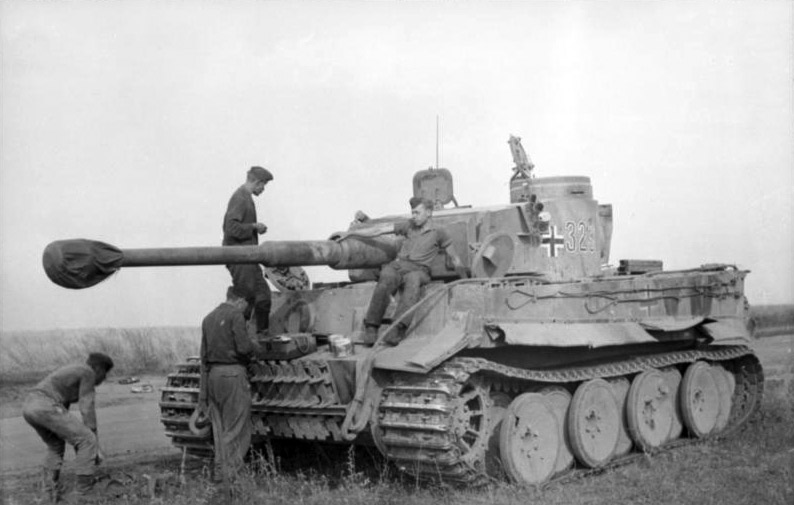The Tiger Tank was without a doubt the most feared tank by the Allied forces during the Second World War. The thing that made this tank so feared and respected was the huge 88mm gun which could destroy a Sherman tank at ranges up to 3600 yards.
This was far beyond the range of the guns mounted on the Allied tanks, so before an Allied tank had any chance of destroying it, it had to be well inside the range of the Tiger.
Designer Ferdinand Porsche gave the tank the name Tiger which was a lot shorter than the official German designation: Panzerkampfwagen VI Ausführung H or E (later in the war).
The Tiger Tanks were first deployed in 1942 when they were used in North Africa against the American and British forces. Subsequently, they saw action on all fronts until the very last days of the war.
After their first encounters on the battlefield, Allied tank crews reported virtually every tank they encountered as a Tiger Tank, which was unlikely because the Germans only managed to build 1,347 before production stopped in August 1944.
The Tiger Tanks were well ahead of any tanks the Allied forces had in their inventory, but they were not without flaws. The tanks were over-engineered, used expensive materials and were very labour-intensive to build. When it broke down, it was difficult and expensive to fix.
Some of the tracks used were prone to break, and its high fuel consumption made it a strain on the already bad fuel situation for Nazi Germany.
After the war had ended, the remaining Tigers Tanks were scrapped and now very few remain. Only a handful can be seen in museums and even fewer survive outside as monuments.
At this time there is only one Tiger left in running order; The Bovington Tank Museum in the United Kingdom has Tiger 131 which is the star of many tank-shows and has been used in the 2015 movie “Fury.”
https://youtu.be/SYMYdVt_CTE
